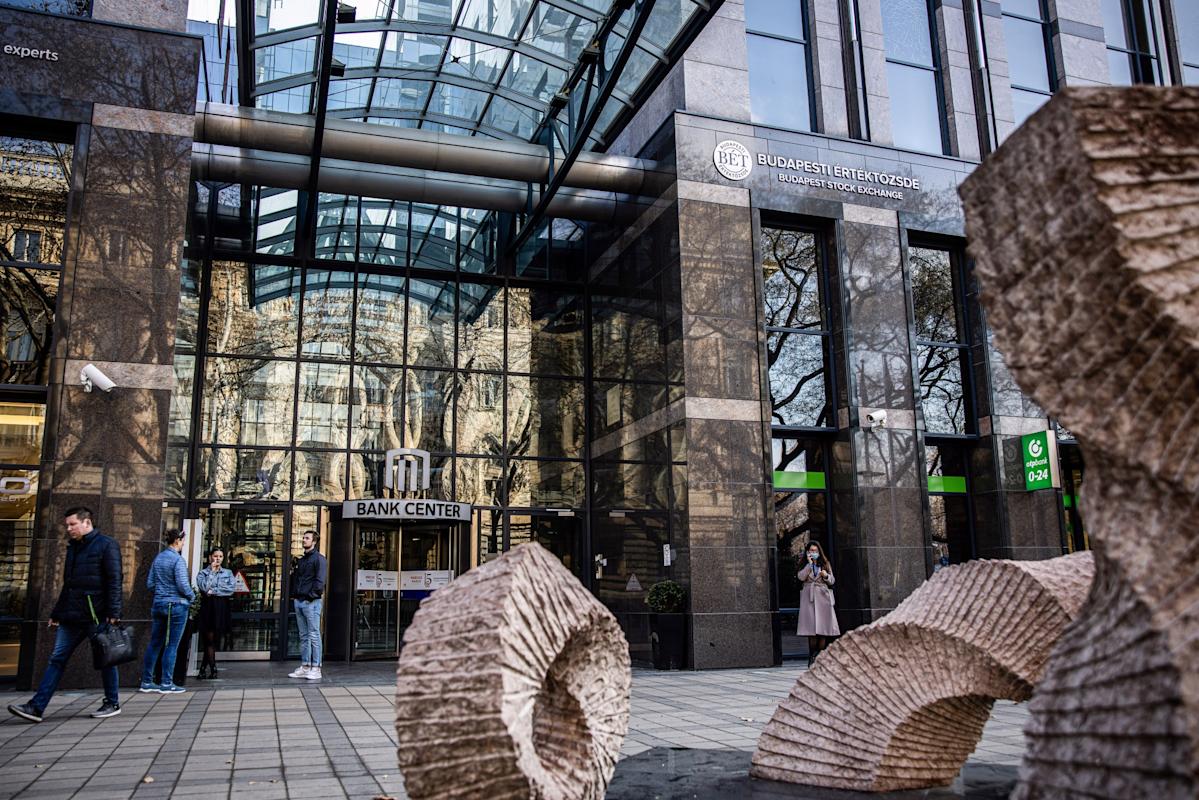Gains in some markets, including Hungary, Brazil and Egypt are topping 20%.
(Bloomberg) — A rare turn in global inflation trends is expected to inject fresh momentum into this year’s rally in emerging-market bonds.
Most Read from Bloomberg
Morgan Stanley Investment Management Inc. and Ninety One Plc are among the money managers positioning for further gains in emerging local-currency debt, on a view that central banks will have room to cut interest rates faster than in the developed world. It would add another dimension to a stellar run for investors, who are already enjoying the best gains in years in asset classes from stocks to dollar bonds.
What’s exciting investors is a sharp slowdown in inflation. For two straight quarters, consumer prices in emerging markets have grown more slowly than in developed nations, according to Bloomberg indexes. That flip has not been seen for at least three-and-a-half decades — save for an episode during the volatile pandemic years — and could prove a bonanza for the bond market.
“The implication is that monetary policy can be more supportive in emerging markets,” said Jitania Kandhari, deputy chief investment officer at MSIM.
Real Rates
Investors in local bonds have reaped returns of 7% on average this year, surpassing US Treasuries, while gains in some markets, including Hungary, Brazil and Egypt are topping 20%.
The rally has been fueled by expectations of hefty rate cuts, and the latest price readings could make the case for even deeper and faster easing.
Average annual inflation in emerging markets fell for a fifth successive quarter to 2.47% in the July–September quarter — the lowest since early 2021, the Bloomberg indexes show. In contrast, inflation in developed economies rose to 3.32%.
Many countries are already in rate-cutting mode — Mexico and Poland are the latest to ease policy, while Thailand, South Korea, Turkey and India are among those tipped to reduce borrowing costs by year-end.
Yet most central banks have proceeded cautiously with monetary easing, holding rates well above inflation. In Brazil for instance, rate-setters kept policy steady this week for the third straight month, even though the inflation-adjusted, or “real,” rate stands around 10%.
Similarly, Turkey’s inflation-adjusted rate is about 7%, while India, South Africa and Colombia all offer more than 3.5%.
Story Continues
Grant Webster, co-head of emerging-market sovereign and FX at Ninety One, estimates that on average, real policy rates in emerging markets are near the highest in over 20 years.
While that’s drawing yield-hunting investors, it’s also supporting currencies, Webster notes, with the Brazilian real and Hungarian forint among those notching double-digit gains year-to-date versus the dollar. A gauge of emerging-market currencies rose on Monday by the most since Oct. 20 on a closing basis.
“The higher yielding markets have room to rally: South Africa and much of Latam where inflation concerns have dissipated yet policy remains elevated,” he said.
Dollar Swings
Of course, the yield advantage cannot entirely shield emerging markets from dollar swings; a greenback bounce since July has inflicted modest losses on currencies as well as local debt gauges. But any dollar strength from here could be limited, with the Federal Reserve widely expected to carry on cutting rates.
But even investors who expect the dollar to stay firm say higher-yielding emerging-market debt has room to rally. BBVA strategist Alejandro Cuadrado is among them. He has trimmed emerging-currency exposure, but remains positive on the debt, anticipating returns from bonds’ duration as interest rates fall.
Similarly, strategists at Amundi Investment Institute describe emerging local-currency bonds as a “strong conviction” trade. They favor Latin America, especially Brazil and Mexico, due to “improving inflation dynamics.”
Meanwhile, the rapid cooling of inflation in emerging economies, relative to developed ones, is spilling into equities as well. The shift has helped narrow the risk gap between the two markets, said Derrick Irwin, senior portfolio manager at Allspring Global Investments.
“The emerging world looks relatively less risky than DM for the first time in a long time,” he said.
What to Watch
Uganda’s central bank will announce its interest-rate decision on Monday. Mauritius, Zambia and Romania will decide on theirs on Wednesday. Serbia and Peru are among others making policy decisions this week.
The earnings-reporting season will pick up momentum, especially with technology giants detailing results this week. Investors will get updates from Tencent Holdings, JD.com, Hon Hai Precision Industry among others.
South Africa will deliver its mid-term budget on Wednesday; S&P Global Ratings will review the country’s sovereign’s credit rating later in the week.
Data due November 9-15 will probably show China’s credit expansion cooled in October on reduced government financing and slower bank lending.
Friday will bring another wave of China data, including house prices, retail sales and industrial production.
Inflation data from a number of emerging economies including Brazil, Colombia and Poland will signal prospects for monetary easing
–With assistance from Zijia Song.
(Updates with Monday’s market moves)
Most Read from Bloomberg Businessweek
©2025 Bloomberg L.P.

